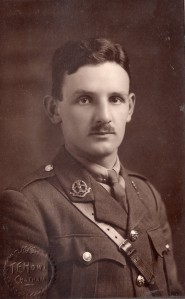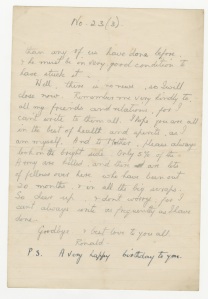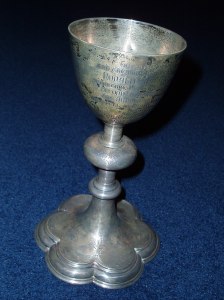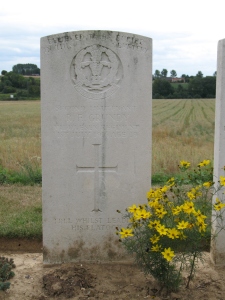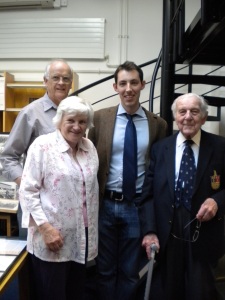William Frank Godfrey would walk through the door of 32 Bramfield Road, Battersea, a short walk up the hill until he reached Wandsworth Common and looking across from Bolingbroke Grove he would see the spire of Emanuel School, where Frank attended between 1909-1914. Down the drive and into the microcosm that is Emanuel School. In the last summer of peace we read in the Howe House cricket notes from the Emanuel School Magazine, The Portcullis that, ‘Some good hard hitting was done by Godfrey…’ He also gained special praise ‘for the hard work in which he worked for the House in the team race’ during the House athletics competition. He also took the young platoon of ‘budding warriors’ under his command as a Company Sergeant Major in the Emanuel OTC.
Within a couple of days of the outbreak of the First World War young Frank made an application to the War Office and received a Commission on August 15 1914 in the North Staffordshire Regiment. Frank had literally walked out of the Emanuel School gates and straight into the army. A local newspaper noted, ‘From the outset he perceived the struggle would be severe and prolonged, and realised that it would require each and all to give of their best. He could not resist the call of Empire in its hour of peril and grave anxiety…’.
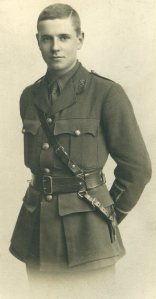
Frank’s letters were reprinted in The Portcullis during his time on the Western Front. All the original First World War letters have since been lost and so we owe a debt of gratitude to those Old Emanuels who reprinted OE correspondence in the School magazine, for without them we wouldn’t have these precious vignettes of how Emanuel boys saw their experiences. Although letters were censored they still offer important information on the experiences of the war.
Letter Summer Term 1915
W. F. Godfrey, Esq.,
“B” Coy. 1st Nth. Staffs. Regt.,
17th Brigade, 8th Div. B.E.F.
I was first under rifle fire when in charge of a fatigue party making a communication trench, but nobody was hit. The starlights which are thrown in order to see what the enemy are up to, produce very pretty effects at night, and it is entirely by means of these that the fire is directed.
My first two days were in the support trenches, but since then I have been in the fire trenches and so far have only lost two men out of my platoon, both wounded by snipers.
On the whole the work out here is very interesting and one cannot help being fascinated with it.
Regarding aircraft the activity is entirely on one side, only once have I seen a German aeroplane and he made off rapidly when one of ours came in sight. Our men are extremely daring in the way they utterly disregard the German anti-aircraft guns.
We are billeted in the sixth line of trenches, which is on the bank of a canal.
Even that is a perfect heaven to where I am now, as my Company occupies a very advanced part of the line round a small village, which has been shelled until it is little more than a heap of bricks and a few walls, the mud is nearly knee deep in places. There are very few dug-outs and those there are, are of a very inferior quality. Mine measures two feet high by three feet square.
Frank’s next letter discusses the issue of not having had rest and his tone has changed in the course of a few months, showing the effects of what long spells at the Front could do to morale.
Letter Christmas Term 1915
For some time past the rumour has gone round each time that we came out of the trenches that we were going well back for a three weeks’ rest, but so far this rumour has never materialised, and now we are about the only Division at the front that has not been to a rest camp since it has been here. For some reason best known to higher authorities, we are leaving the trenches tonight, instead of Sunday next, by which time our twelve days would have been completed. Needless to say, rumours are rampant. Suggestions are that Arras, Hooge, Archangel, India, or our three weeks’ rest are in sight – nobody knows. Anyway, it is a wet night, and I would far rather be going out of than into the trenches, even if we go to a bivouac if leaky tents in a wood.
I am pleased to say that I. A. While and H. B. Ryley are still going strong, in fact are thriving on the air of Flanders. I wish Emanuel all good luck when next term commences.
By the time Frank was fighting on the Somme in the summer of 1916 he was with the 4th Battalion North Staffordshire Regiment and was attached to the 72nd Trench Mortar Battery. The tone of the second letter suggests that he was battle weary and work with the Mortar Battery would no doubt have added to this feeling. We next hear of him in the Christmas Term Portcullis where in the Howe House notes we read, ‘It was with the deepest regret, that we heard of the death in action of Second Lieut. W. F. Godfrey. He was a Company-Sergt.-Major to the Corps, and in that position, as in all others, he worked untiringly for his School and House. To his bereaved parents we all offer our sincere sympathy, knowing that their loss is his great gain.’
Within the space of one week, Frank, Harold Buchanan Ryley Junior and Ivor Austin While, all Old Emanuel boys and all in the North Staffordshire Regiment, had been killed in action in the Battle of the Somme. Frank was killed by the explosion of a shell on 3 September 1916 a few weeks after his twentieth birthday. He was in action at Delville Wood on the last day of the battle of the same name. Frank would have seen Delville Wood as a desolate landscape, having been scared by heavy shelling in the previous months.
Frank’s Captain remembered him, ‘He was always cheerful, even under the most adverse conditions, and was recognised by his senior officers as very plucky indeed’. His Chaplain noted, ‘He was one of those who, by his example, made life easier for others.’ The newspaper article continued its commentary:
A truer epitaph of his life cannot be written, as he never spared himself in his unselfish devotion to everything worthy and inspiring. He will be sadly missed by all who knew him, and the memory of his splendid character and really lovable disposition will long remain.
Frank wouldn’t walk through the doors of 32 Bramfield again but his parents and elder sister had to and one can only imagine the sense of loss they must have felt. The South Western Star put it just right with these lines:
The debt that is owing to those young lives who answered the first call, can never be measured. They gave themselves ungrudgingly, and sacrificed all to ensure the eventual triumph of Right over Might. Among that gallant company of heroes, Second-Lieut. W. F. Godfrey truly earned an honoured place.
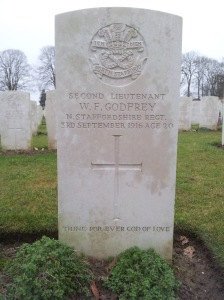
Today when one visits Frank’s grave there is nothing but silence, but his memory is full of the life of a young man who was cruelly cut down in youth, having known only the serene sports field of Emanuel School and the hellish French landscapes of the Western Front. He is now remembered in the Emanuel School Chapel, St. Michael’s Church, Bolingbroke Grove in addition to his name being inscribed on the St. Mary Magdalene memorial, Trinity Road, Wandsworth Common.
GODFREY, WILLIAM FRANK Second Lieutenant 03/09/1916 20 North Staffordshire Regiment United Kingdom VII. L. 10. DELVILLE WOOD CEMETERY, LONGUEVAL

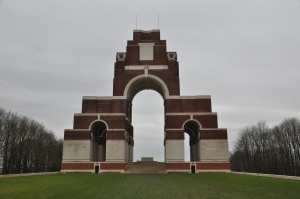

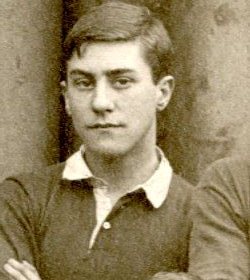
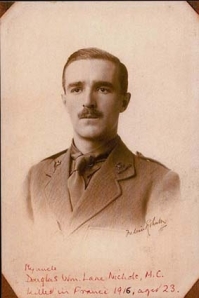
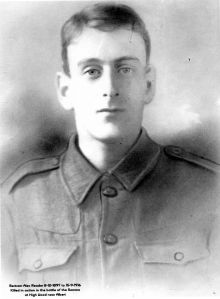

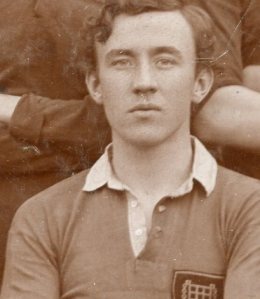
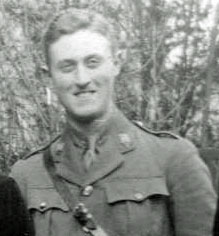
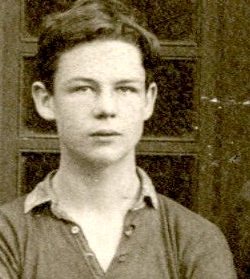


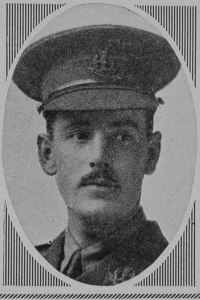
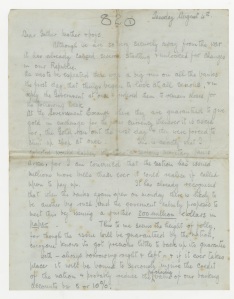
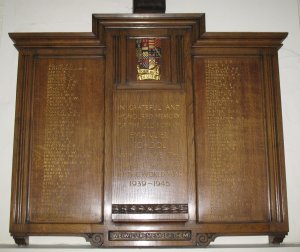


![war memorial454[1]](https://emanuelschoolatwar.files.wordpress.com/2013/07/war-memorial4541.jpg?w=300&h=219)
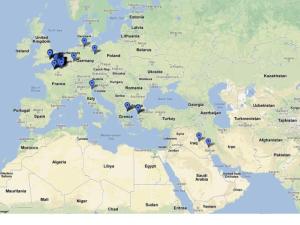

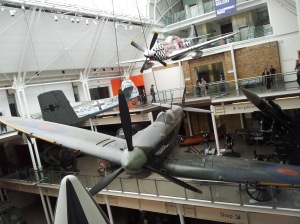
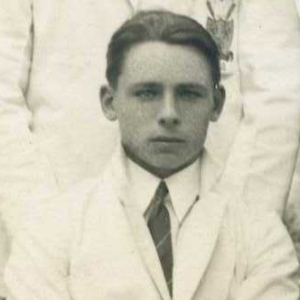
![1940 Buckingham Palace - receiving the DSO[1]](https://emanuelschoolatwar.files.wordpress.com/2013/07/1940-buckingham-palace-receiving-the-dso1.jpg?w=228&h=300)
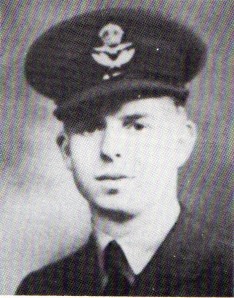
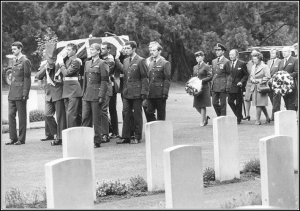
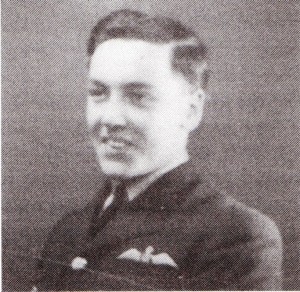
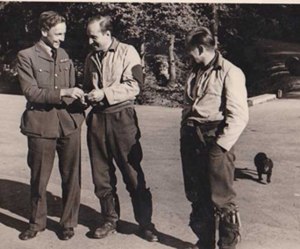
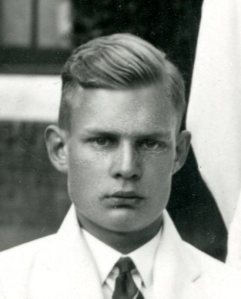

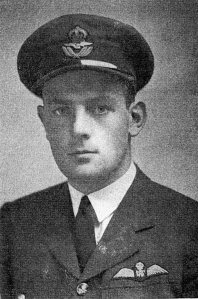
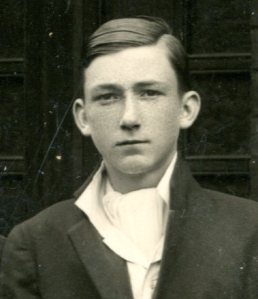
![10836988_121700910685[1]](https://emanuelschoolatwar.files.wordpress.com/2013/07/10836988_1217009106851.jpg?w=300&h=225)
